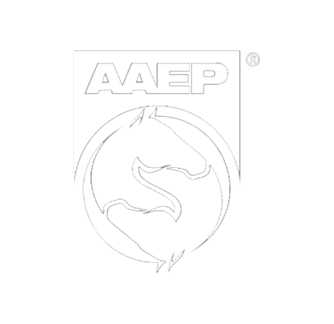Equine Dentistry
Dentistry

Dentistry is an important part of your horse’s general health care. An oral exam is recommended yearly to help monitor normal wear and identify potential problems. Discomfort in the mouth can lead to poor weight gain, decreased performance, and bad behavior even when not bridled. Depending on the age of your horse and oral exam findings, a dental procedure may be recommended once to twice a year. For a thorough and safe dental procedure to be performed the horse is sedated and a speculum is placed in the mouth. With motorized dental equipment, each tooth can be addressed efficiently and accurately. Routine dental care is important due to the unique structure and function of a horse’s teeth. Horses have a combination of brachydont and hypsodont teeth. The simple (brachydont) teeth are the first premolars (wolf tooth) and canines that have a distinct crown and root but have no function for the domestic horse. The incisors and molars (cheek teeth) are hypsodonts, like the molars of ruminants (cows, goats, and sheep, etc). This type of tooth has a large body that continues to erupt into the horse’s mouth as it is worn down by fibrous feed material. Most of the tooth is below the gum line in younger horses and continues to develop as it enters the mouth. The root of young teeth extends into the maxillary sinuses and mandibles creating “dental bumps” in 2-5-year-olds.
All teeth are constructed of enamel, dentin, and cementum, but the hypsodont type has multiple layers of these strong materials to provide high tensile strength for a tough grinding surface. Enamel is the hardest material in the body but is brittle. Therefore, it is supported by the surrounding dentin and cementum layers. As the tooth is sanded down through mastication the softer dentin and cementum are lost first leaving the sharp enamel behind. These sharp enamel points rub on the horse’s cheeks and tongue while eating. A routine float removes these uncomfortable points from the outside of the upper molars and the inside of the lower molars. Calluses and abrasions (ulcers) created by the sharp points heal quickly once the teeth are smoothed.
Beyond requiring routine care, other problems may arise from improper tooth development, eruption, and wear. Improper development and eruption can lead to poor alignment and decrease the longevity of the tooth. Foals have three sets of molars that are large and fill the entire mouth. Starting at 2.5 years of age the deciduous (baby) teeth are replaced by the mature adult teeth. All 40 permanent teeth are typically erupted by 5 years of age. As the deciduous teeth wear down and start to become loose, they can fracture, become entrapped, and inhibit adult tooth eruption. Twice yearly oral exams starting at 2-2.5 years of age are important to identify possible “caps” (remainder of deciduous teeth that are still attached). “Caps” are easily removed to aid in comfort and eruption of adult teeth if they do not fall out on their own. However, if a deciduous tooth is extracted too soon the development of the adult tooth can be stunted. During eruption, further cementum and dentin are added to the outside and center of the tooth (respectively). If this development is disrupted the tooth can become weak as it ages and fractures easily. Knowledgeable extraction of “caps” is important for this reason.

